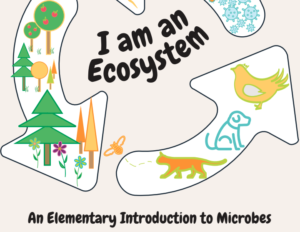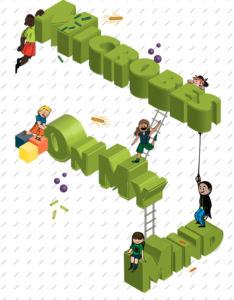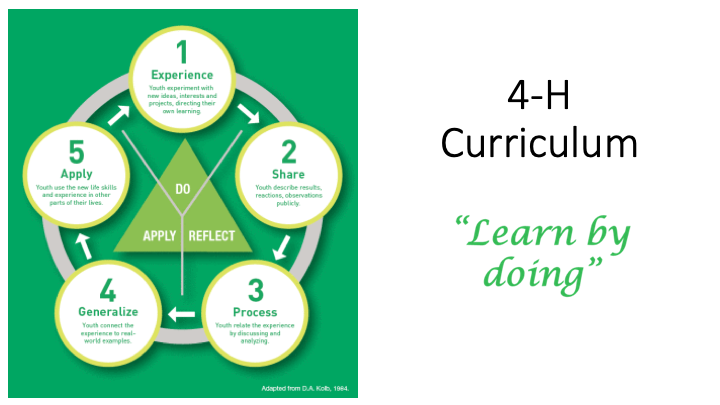Lee County 4-H Microbiology Program
go.ncsu.edu/readext?720886
en Español / em Português
El inglés es el idioma de control de esta página. En la medida en que haya algún conflicto entre la traducción al inglés y la traducción, el inglés prevalece.
Al hacer clic en el enlace de traducción se activa un servicio de traducción gratuito para convertir la página al español. Al igual que con cualquier traducción por Internet, la conversión no es sensible al contexto y puede que no traduzca el texto en su significado original. NC State Extension no garantiza la exactitud del texto traducido. Por favor, tenga en cuenta que algunas aplicaciones y/o servicios pueden no funcionar como se espera cuando se traducen.
Português
Inglês é o idioma de controle desta página. Na medida que haja algum conflito entre o texto original em Inglês e a tradução, o Inglês prevalece.
Ao clicar no link de tradução, um serviço gratuito de tradução será ativado para converter a página para o Português. Como em qualquer tradução pela internet, a conversão não é sensivel ao contexto e pode não ocorrer a tradução para o significado orginal. O serviço de Extensão da Carolina do Norte (NC State Extension) não garante a exatidão do texto traduzido. Por favor, observe que algumas funções ou serviços podem não funcionar como esperado após a tradução.
English
English is the controlling language of this page. To the extent there is any conflict between the English text and the translation, English controls.
Clicking on the translation link activates a free translation service to convert the page to Spanish. As with any Internet translation, the conversion is not context-sensitive and may not translate the text to its original meaning. NC State Extension does not guarantee the accuracy of the translated text. Please note that some applications and/or services may not function as expected when translated.
Collapse ▲PROGRAM OVERVIEW
This was developed for in-person programming. With combined creativity we can support your classroom in this virtual world and as restrictions are ever changing, when you are back in the classroom.
“We are not alone.” Historically, this phrase has conjured up images of aliens waiting in space to descend on our unsuspecting planet. However, advances in technology over the years have meant that “we are not alone” applies to our own bodies, our own sense of self in the universe. It turns out that we are colonial creatures. For every one of our cells that is “us,” we also host ten times as many bacterial cells. Our digestive system alone is estimated to contain between 500 and 1,000 different bacterial species. Furthermore, we are learning that these bacteria and other microbes that inhabit our bodies, known collectively as our “microbiome,” are essential for our survival. Our microbiome helps to train our immune system to recognize invaders. It also helps us to better process food and nutrients. Some studies even suggest that our microbiome may affect our moods! Without our trillions of hitchhikers, we would be lost. However, despite our close relationship with our microbiome, not all bacteria are helpful to us. Many bacteria, which are fine outside of our bodies, become disease-causing pathogens once they get inside. Our bodies have many natural defenses against these invaders, including our skin, our mucous membranes, and our immune system. However, some do find their way in. For example, every year, thousands of people become sickened by a bacteria known as Salmonella. Salmonella bacteria cause a disease known as salmonellosis which results in fever, abdominal cramping, and diarrhea. In some cases, salmonellosis can be fatal. Salmonella bacteria are found normally in the ground, in water, and in poultry and eggs. Proper food safety procedures, including thoroughly washing vegetables, storing food correctly, and cooking all foods to proper temperatures, can help prevent salmonellosis.
Sneak a Peek into materials included with the curriculum:

Elementary Program – In this unit, youth will confront some of the myths and facts surrounding microbes in general and Salmonella in particular. Youth will examine where microbes grow in the environment and under what conditions. They will investigate the roles that microbes play in a healthy ecosystem as well as the
roles that microbes play in our own bodies. Youth will also examine the negative effects of microbes as they investigate a disease outbreak. Finally, youth will apply their knowledge by designing technologies to help keep people safe from dangerous, food-borne microbes in our world.

Middle School Program – In this unit, participants will discover the role microbes play in our bodies, our ecosystem, and our food. The activities provided will make it easy for the facilitator to explain the impact microorganisms have on humans in an interactive and engaging experience. These lessons are designed to encourage curiosity, resilience, and cooperation in our learners that will allow them to develop an understanding of the relationship between food safety, microbiology, and diseases, as well as the careers associated with microbiology. Participants will make connections between their existing knowledge of microorganisms, human health, and potential career paths related to this topic. Through the activities in this unit, participants will deepen their understanding of microbes in history, where they can be found, how to prevent the spread of microbes on them and in their food, and how certain careers have advanced to provide a better understanding of microorganisms. Participants will walk away knowing that microbes are a part of their everyday life and that not all microbes are
harmful, but some can be also be beneficial. Middle school participants will address some of the misconceptions surrounding microbiology and gain a better understanding of how important microbes are in our ecosystem. Participants will gain an understanding of the importance of food safety and the precautions that need to be taken to keep their bodies healthy and protected.
High School Program – The unseen world of bacteria, the microscopic kingdom of life, has an enormous impact on our everyday lives. This series of lessons and activities seeks to provide participants with an interactive look at the microbial world from a variety of approaches. First, participants are introduced to the amazing breadth of this group as they become familiar with the distinguishing characteristics of some representative bacteria that are commonly found in association with humans. Then participants are introduced to the increasingly important concept
of the microbiome – the populations of bacteria that inhabit all of our bodies and that contribute to health as well as disease. Next, learners investigate the mechanisms by which the human body keeps any harmful invaders at
bay, both by external protective means as well as through cellular armies that attack pathogens. The importance of public health organizations and surveillance is demonstrated as learners discover how infectious diseases are tracked and how epidemiologists function to control outbreaks. Participants then step into the operational world by modeling several tools currently available to scientists for identifying bacteria at the molecular level. Participants model gel electrophoresis of
DNA molecules as well as DNA sequencing strategies that are on the cutting edge of research. Environmental factors that can affect the growth of bacterial populations are explored in the next lesson. These tiny organisms reproduce very quickly, which can give them an edge when it comes to growing large populations very fast. Finally, participants can practice several essential lab techniques that are mainstays for anyone seeking to work in a research or lab environment. These hands-on skills are highly desirable in today’s technical workplace. Careers in microbiology can become more appealing through participation in the curriculum.
PROGRAM OBJECTIVES
- Increase student knowledge through hands on learning opportunities in areas of science and math, specifically Microbiology
- Provide experiential learning the area of Microbiology
- Students will demonstrate skills and knowledge mastered from this experience
METHODOLOGY AND EVALUATION
Experiential Learning is student centered. It is an active learning process, which first involves youth in an activity, asks them to reflect on the activity to determine what was useful or important to remember, and then tasks youth with understanding how the information they learned applies to their lives now and in the future. This learning process is holistic and allows youth to consume, apply, and
build upon life experiences. Pfeiffer and Jones’ experiential learning model is commonly used in 4-H. However, other pioneers such as Kolb provide a wealth of research that emphasizes the importance of the adult facilitator. According to Kolb, the experiential learning model allows the learner actively participate in what is learned. The facilitator’s role is to connect with the student to spark their interest and intrinsic motivation so that the student can gain, revise, or enhance their life skills. The facilitator plays multiple rolls during this process: balancing the attention of the learner, engaging with the subject matter, and creating a safe and holistic learning environment.

Evaluations are important for impact reporting and most 4-H curriculum have brief but required pre and post tests to measure results.
TRAINING
Training is required and dates will be provided once interest in gauged.
STANDARDS
Scope and Sequence Provided upon request




